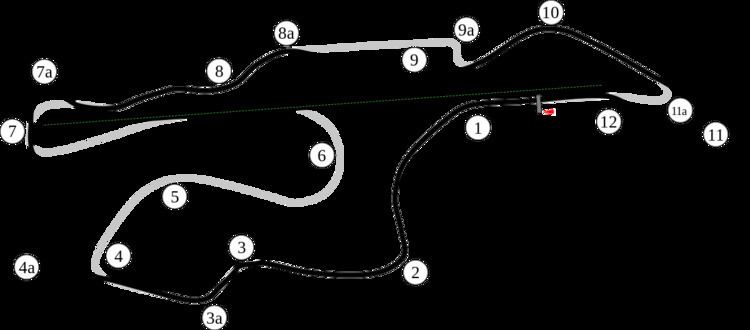Driver Ricky Rudd | ||
 | ||
Date June 9, 1991 (1991-June-09) Location Sonoma Raceway, Sonoma, California Course Permanent racing facility
1.99 mi (3.2 km) Distance 74 laps, 172.88 mi (308.69 km) Weather Warm with temperatures reaching up to 82.9 °F (28.3 °C); wind speeds up to 12 miles per hour (19 km/h) | ||
The 1991 Banquet Frozen Foods 300 was a NASCAR Winston Cup Series racing event that occurred on June 9, 1991, at Sears Point International Raceway in the American community of Sonoma, California.
Contents
Scott Gaylord would make his NASCAR Cup Series debut in this racing event. Butch Gilliland, the father of current NASCAR Sprint Cup Series competitor David Gilliland, failed to qualify for this race along with three other drivers.
Kyle Petty would break his leg at a crash in Talladega and was unable to compete; Tommy Kendall took over the #42 Mello Yello machine while Petty was recuperating. Petty's first race after his injury would end up being the 1991 Heinz Southern 500; a fall race at Darlington Raceway.
Summary
While the average green flag run would be 10 laps, 19% of this 74-lap race would be run under some sort of caution flag. A grid of 43 American-born drivers qualified for this road course racing event; R.K. Smith would blow his engine on the second lap, making him the last-place finisher. John Krebs would be the lowest-finishing driver to complete the race while Hershel McGriff would see his ambitions ruined by a crash on lap 61. Ford, Chevrolet and Pontiac vehicles would form the clear majority of the manufacturers involved.
After more than two and a half hours of racing, Davey Allison would defeat the first winner of the annual event Ricky Rudd by a margin of one second after Rudd was black-flagged at the checkers for a previous contact with Allison in the race. Their intense rivalry at this racing event proved their expertise on road courses when most of the other NASCAR drivers in the 1990s were more concerned about racing on oval tracks and struggled to survive in places like Sonoma and Watkins Glen. While Rudd was originally considered to be the winner since he finished first, NASCAR officials spotted a flagarant incident involving him and second-place driver Davey Allison. Rudd's tapping of Davey Allison at the White flag earned him a black-flag of 5 seconds added to his total time; enough to put Allison as the winner. National media would cover the closing moments of this controversial race. As a result, Sonoma Raceway would forever be put on the map of motorsports history.
Three accidents and an oil spill on the track would cause most of the yellow flag occurrences. While Rusty Wallace would lead the most amount of laps in this race, his lack of consistency kept him from besting either Rudd or Allison. The cars in this racing event averaged speeds of nearly 73.000 miles per hour (117.482 km/h). Dale Earnhardt would keep his NASCAR Winston Cup championship points lead but would lead Ricky Rudd by a mere 53 points after this race. Individual race earnings for each driver ranged from the winner's portion of $61,950 ($163,196.98 when adjusted for inflation) to the last-place finisher's portion of $3,475 ($6,110.33 when adjusted for inflation). NASCAR officials at this race were authorized to hand out a grand total of $458,960 to all the qualifying drivers of this event ($807,020.55 when adjusted for inflation).
